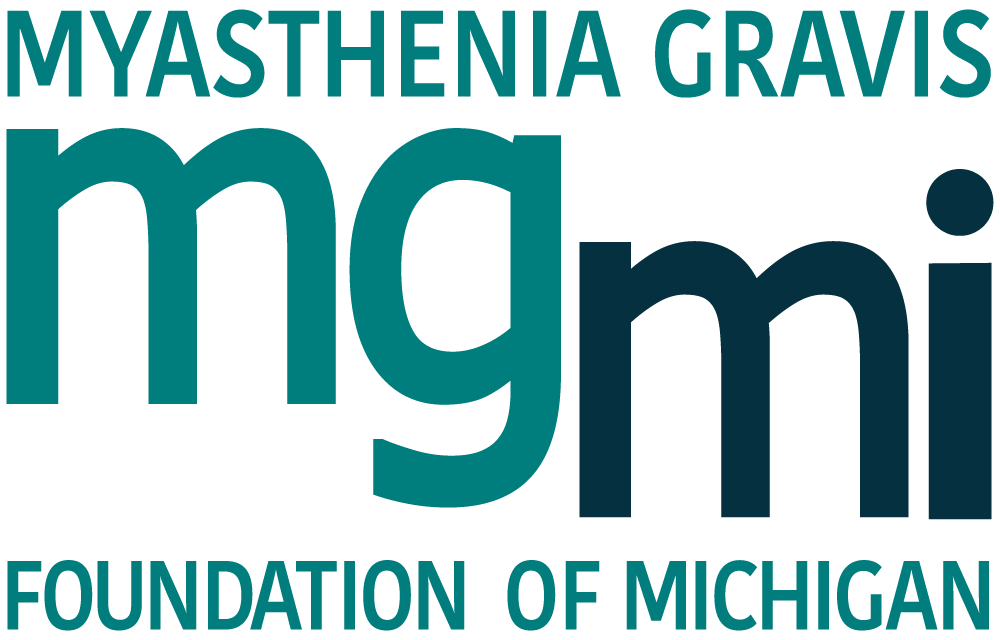What do I need to know
About Myasthenia Gravis

What is Myasthenia Gravis (MG?)
Myasthenia Gravis (pronounced My-as-theen-ee-a Grav-us), also know as “MG,” is a serious auto-immune neuromuscular disease that manifests itself by varying degrees of weakness in the body.
What Does This Mean? The Body Attacks Its Own Cells.
- The NERVE CELL sends a CHEMICAL SIGNAL.
- ANTIBODIES block the chemical signals from reaching the RECEPTOR SITES on MUSCLE cells.
- Without these CHEMICAL SIGNALS, the RECEPTOR SITES are reduced, causing weakness.

Who Gets MG?
MG affects both men and women and occurs across all racial and ethnic groups. It most commonly impacts women under 40 and men over 60, but it can occur at any age, including childhood. We don't know why it occurs, but it is not contagious or directly inherited. It is estimated that 20 out of every 100,000 people in the U.S. have MG.
Who gets mg? Studies have found people with MG:
For every 100,000 people
people
will be living with MG.
MG more frequently affects women than men.
Age of onset peaks 40 for females and 60 for men.
females
males
What are MG Symptoms?
Someone with MG may experience just one or a combination of these symptoms. The severity of symptoms varies from patient to patient. Mild cases are temporarily relieved by rest. Strength is usually best in the morning, but fatigue and weakness increase as the day goes on. Symptoms can come and go at first, making diagnosis difficult. Tiredness in the usual sense is not a typical symptom.
Blurred or Double Vision
Involuntary Drooping Eyelids
Slurred Speech
Loss of Facial Expression
Difficulty Chewing and Swallowing
Weakness in Arms and Legs
Nasal Voice, Usually after Prolonged Talking
How is MG Diagnosed?
- Blood test for abnormal antibodies
- Electromyogram (EMG)
- Edrophonium Chloride injection
- Neurological Exam
Is There A Cure For MG?
There is not yet a cure for MG. However, the disease does not reduce life expectancy – most people with MG manage their symptoms and lead active lives. These strategies can help:
Maintain
Maintain a well-balanced diet and regular eating habits, get sufficient rest, and reduce stress.
Schedule
Schedule regular rest periods during the day and delegate tasks to others when possible.
Tips
Example: If swallowing is affected, plan meals at times when your muscle strength is greater.
How Is MG Treated?
While there’s no known cure, effective treatments allow most people with MG to lead full, healthy lives. Treatment options include:
- Medications:
Anticholinesterase agents, such as Mestinon, promote the activation of more receptor sites. Corticosteroids (e.g., prednisone) and immunosupporesive agents (e.g., Imuran, and CellCept) may be used to suppress the abnormal action of the immune system.
- Surgery:
Thymectomy is surgical removal of the thymus glad located behind the breastbone. It can result in noticeable improvement or remission.
- Plasma Exchange:
Plasmapheresis removes the abnormal antibodies from the plasma of the blood.
- Infusion Therapy:
Intravenous immune globulin (IVIg) replaces a patient’s antibodies with those donated by plasma donors. Newer therapies interfere with antibody life cycle or activity.
Treatment decisions are based on the severity of weakness, the patient’s age and the degree of impairment.
Understanding Myasthenia Gravis
The Myasthenia Gravis Foundation of Michigan (MG-MI) was founded in 1976 to raise awareness about MG and provide resources and support to persons living with MG and their caregivers.

